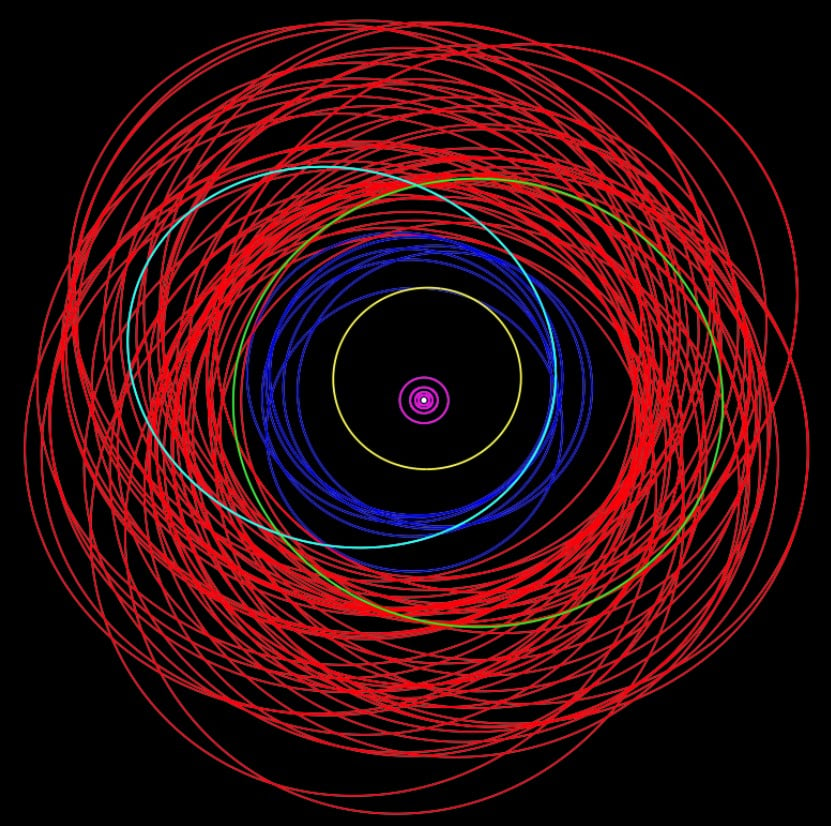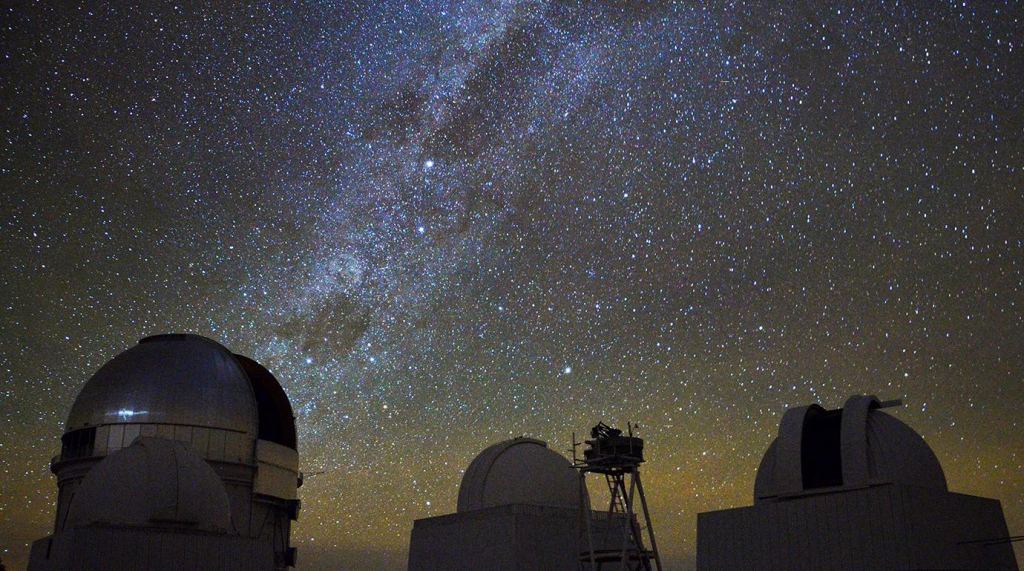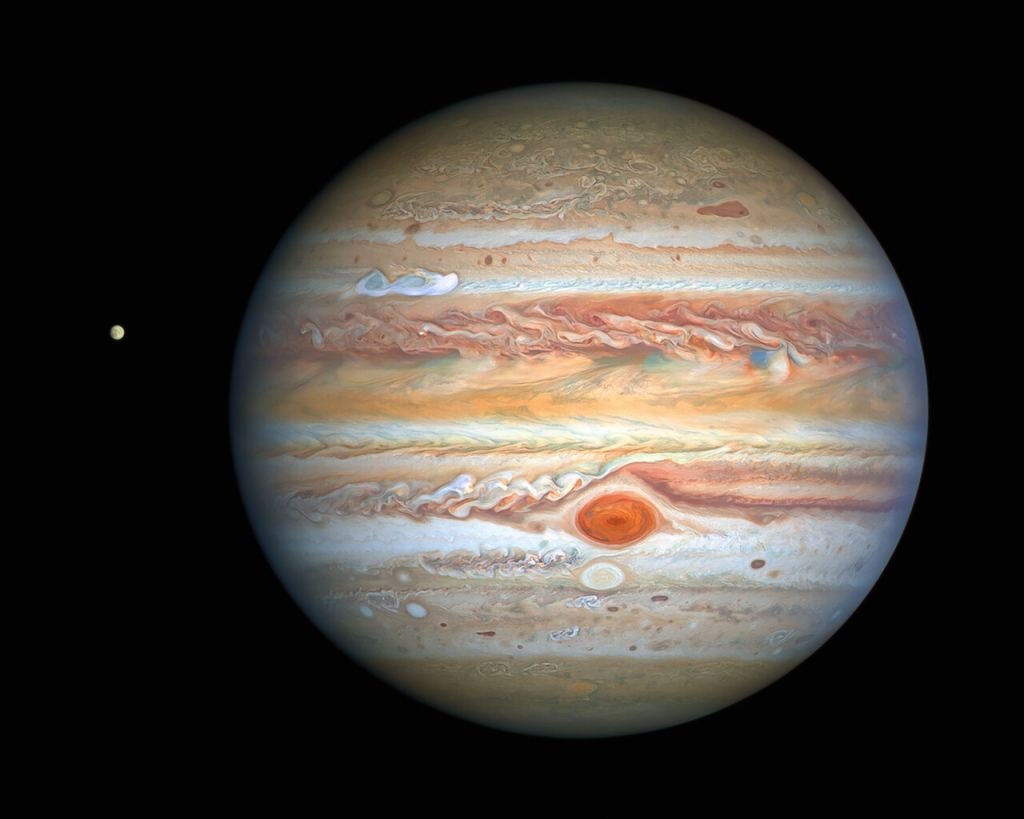The moon hunter strikes again.
A team of astronomers led by Scott Sheppard of the Carnegie Institution has f ound and confirmed 12 new moons orbiting Jupiter, bringing the total of moons at the giant planet to 92. The new moons were quietly announced on the International Astronomical Union's Minor Planet Center website last week, and the new discoveries puts Jupiter in the lead in a recent back-and-forth moon battle with Saturn.
Jupiter was solidly in the lead with Sheppard and team's announcement of 12 new moons back in 2018, but then in 2019, Sheppard and colleagues found a whopping 20 new moons orbiting Saturn, bringing the ringed planet's total number of moons to 82. But now this latest addition moves Jupiter back in the lead.
With Sheppard around, we may never know the final count.
Sheppard has now been involved in the discovery of 70 moons around Jupiter, as well as 43 at Saturn, 2 at Uranus and 1 at Neptune.
For the newest moons discovered, Sheppard and colleagues used Subaru Telescope in Hawaii in September 2021 and the Dark Energy Camera located on the Blanco telescope at the Cerro Tololo Inter-American Observatory in Chile in August 2022. Astronomers acknowledge it takes several observations to confirm an object actually orbits around Jupiter, so the entire whole process of discovery and confirmation takes well over a year.
The newest moons range in size from 0.6 miles to 2 miles (1 to 3.2 kilometers) wide; they have not yet been named. Most of the new moons have large orbits, as 9 of the 12 moons take more than 550 days to orbit the gas giant, Sky and Telescope reported. Astronomers think these distant moons might be captured asteroids, as they travel in a retrograde motion, the opposite direction of Jupiter's rotation.
In addition to Sheppard's moon discoveries, he's also found many small Solar System bodies such as trans-Neptunian objects, centaurs, near-Earth objects and comets. He has three comets are named after him: Sheppard-Trujillo (C/2014 F3), Sheppard-Tholen (C/2015 T5) and comet Trujillo-Sheppard (P/2018 V5).
Sheppard was the lead discoverer of the object with the most distant orbit known in the Solar System, 2012 VP113 (nicknamed Biden). Sheppard's body of work also supports the idea that a massive planet might be in the outer solar system, an elusive possible-planet commonly known as Planet 9.
 Universe Today
Universe Today


